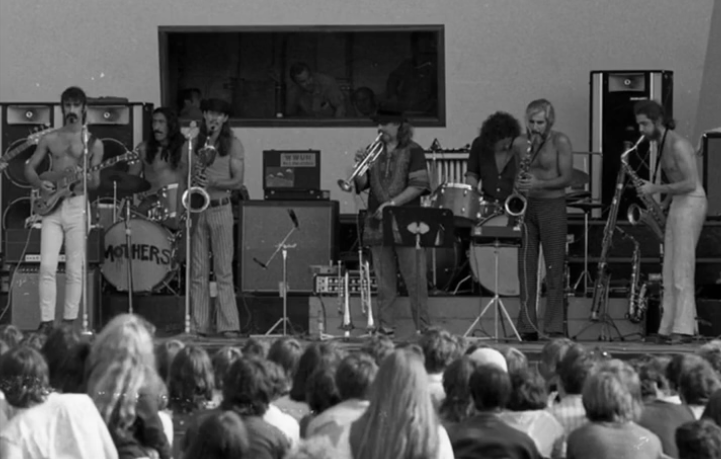
YouTube

Audio By Carbonatix
Back in 1969, Denver was flooded with hippies. They were all here for the Denver Pop Festival, a heroic effort by legendary promoter Barry Fey that took place at Mile High Stadium from June 27 to 29. While the event was overshadowed by Woodstock just months later, it still remains one of the most significant music moments in Denver history. Music history, too – it was also the final performance of the Jimi Hendrix Experience.
The festival could also have a place in other niche histories, as Frank Zappa is said to have invented “the wave” there.
This has been contested, of course. Denizens say that what Zappa had the audience do didn’t meet the standards of the wave as we know it today, and they’re correct: He wasn’t so obnoxious as to have people sit in their seats and stand up and lift their hands, and then sit back down and do it again until everyone just wants it to stop. That form of the wave was perfected by Krazy George Henderson, a longtime cheerleader.
During Henderson’s gig with the National Hockey League’s Colorado Rockies, which played in Denver from ’76 to ’82, he led the crowd in what he believes was the first-ever wave in 1979 at McNichols Sports Arena. He told NPR’s Snap Judgement podcast that it was inspired by a cheer done at his alma mater, San Jose State. The audience in Denver was small and divided into three sections, he said, and the cheerleader told those sections to stand up, yell “Go!” and sit down when he pointed at them. The wave continued even after he stopped signaling.
Will you step up to support Westword this year?
At Westword, we’re small and scrappy — and we make the most of every dollar from our supporters. Right now, we’re $22,750 away from reaching our December 31 goal of $50,000. If you’ve ever learned something new, stayed informed, or felt more connected because of Westword, now’s the time to give back.
“After it died, or stopped, the place went nuts because they’d never seen anything like it,” Henderson said. “Neither had I. … I had that new cheer in my arsenal.” Thanks a lot, Krazy.
Zappa’s “wave,” meanwhile, was meant to make a new sound that he called “teenage stereo.” He was essentially conducting the audience, directing sections to clap and make certain noises when he pointed to them. Being that this was a music festival, the members of the crowd were game but likely not in the state of mind to achieve what Zappa hoped for, creating a cacophony that swept around the stadium. It was very Zappa, but hardly the wave as we know it, which, according to Henderson’s account, came ten years later.
Or did it??
This is the type of phenomenon that relies on oral history. Others have contested to The Guardian that the wave actually originated at the 1968 Olympics in Mexico City. We may never know where it truly came from, but while Zappa’s wave wasn’t a traditional one, they don’t all have to be: At the 2024 Paris Paralympic Games, a “silent wave” occured during a blind soccer match between Turkey and China.
So thank you, Zappa, for giving us the strangest version of the wave yet. You can listen to his whole set with the Mothers of Invention below: